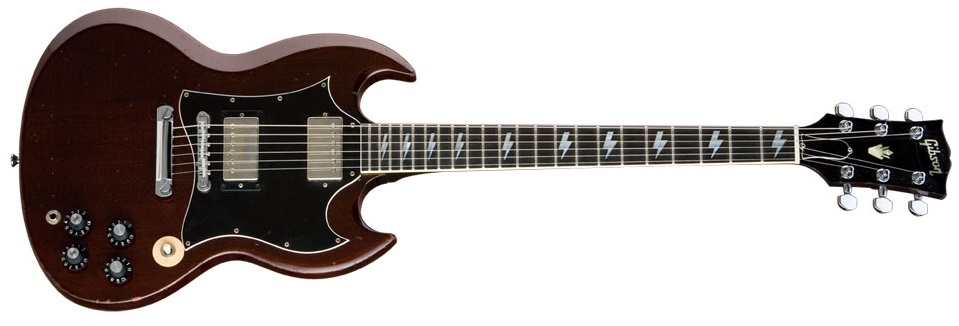pancake81
Well-Known Member
Hi all,
I have two guitars with ABR-1’s on them, however they are mounted different and I was hoping you could shed some light on this for me.
The first is what I understand to be traditional ABR-1 set up, with the thin studs going direct into the body. Not much for surprises here. I understand there is a pro and a con to this design. The pro being that the strings will resonate into the wood better and supposedly offer greater tone. The con of course being that the thin stud is a weak link and not very strong in comparison to a proper sleeve (body bushing) in the body that the post studs thread into.
This is the bridge off of my 2001 61 RI - (officially turned 20 this year )
)



Now, before I post a photo of my second ABR-1 I wanted to address that I know Gibson still offers an ABR-1 but with a slightly different mounting style. Additionally, there are good companies out there like Philadelphia Luthier tools that offer conversion options for folks that have a Nashville bridge and want to swap it to you an ABR-1. The bridge below is not an aftermarket swap.
Now this ABR-1 is stock from Gibson from around 2008. There are a couple of things that stand out to me that I was wondering if any of you could shed some light on. First off, the body has been drilled and sleeved (body bushing) like a Nashville bridge. Not traditional, but stronger so I can understand the concept. However the studs on this Gibson ABR-1 have the slotted (flat head) screw head. Which I am used to seeing, but always on an Epiphone, not a Gibson. Can anyone shed some light on this set up? Do other Gibson models use the slotted stud top? What is the reason for this, does it just make it easier to adjust as appose to the thumb-wheels... If so, why doesn't Gibson use this design as a standard design? This was always a tell tale sign of a Chibson as well. They always used this set up, as did Epiphone.
Please also note, I did not install this ABR-1 upside down. This ABR-1 is unique in the fact that the saddle screw heads are meant to face towards the tail.



I have two guitars with ABR-1’s on them, however they are mounted different and I was hoping you could shed some light on this for me.
The first is what I understand to be traditional ABR-1 set up, with the thin studs going direct into the body. Not much for surprises here. I understand there is a pro and a con to this design. The pro being that the strings will resonate into the wood better and supposedly offer greater tone. The con of course being that the thin stud is a weak link and not very strong in comparison to a proper sleeve (body bushing) in the body that the post studs thread into.
This is the bridge off of my 2001 61 RI - (officially turned 20 this year
 )
)


Now, before I post a photo of my second ABR-1 I wanted to address that I know Gibson still offers an ABR-1 but with a slightly different mounting style. Additionally, there are good companies out there like Philadelphia Luthier tools that offer conversion options for folks that have a Nashville bridge and want to swap it to you an ABR-1. The bridge below is not an aftermarket swap.
Now this ABR-1 is stock from Gibson from around 2008. There are a couple of things that stand out to me that I was wondering if any of you could shed some light on. First off, the body has been drilled and sleeved (body bushing) like a Nashville bridge. Not traditional, but stronger so I can understand the concept. However the studs on this Gibson ABR-1 have the slotted (flat head) screw head. Which I am used to seeing, but always on an Epiphone, not a Gibson. Can anyone shed some light on this set up? Do other Gibson models use the slotted stud top? What is the reason for this, does it just make it easier to adjust as appose to the thumb-wheels... If so, why doesn't Gibson use this design as a standard design? This was always a tell tale sign of a Chibson as well. They always used this set up, as did Epiphone.
Please also note, I did not install this ABR-1 upside down. This ABR-1 is unique in the fact that the saddle screw heads are meant to face towards the tail.



Last edited:



